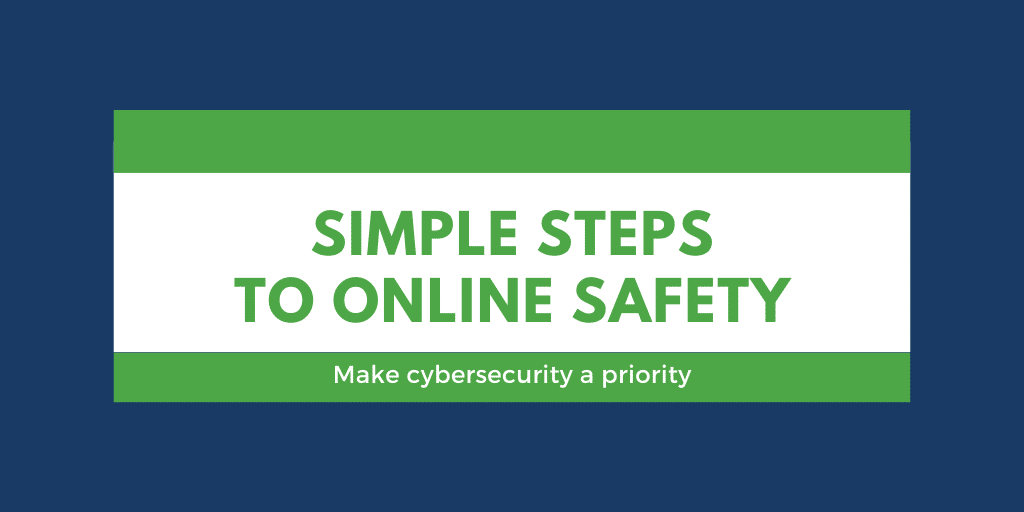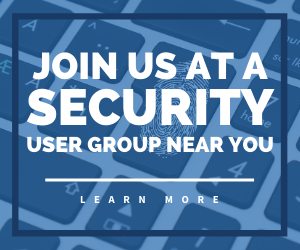Simple Steps to Online Safety at Work, Home, or On the Go
Another October is coming to a close, and that means it’s time to wrap up another National Cybersecurity Awareness Month. This year’s focus is all about the importance of personal cybersecurity ownership and the proactive steps you can take at home and at work to enhance cybersecurity.
The key messages of National Cybersecurity Awareness Month include:
- OWN IT – Understand your digital profile.
Understand the devices and applications you use every day to help keep you and your information safe and secure.
- SECURE IT – Secure your digital profile.
Protect against cyber threats by learning about security features available on the equipment and software you use.
- PROTECT IT – Maintain your digital profile.
Be familiar with and routinely check privacy settings to help protect your privacy and limit cybercrimes.
Check out these simple, practical steps you can take to help you Own IT, Secure IT, and Protect IT whether you’re at work, at home, or on the go. Don’t forget to download the infographic and share this post with your family, friends, and coworkers. Cybersecurity is most effective when everyone is doing their part.
Simple Steps to Online Safety
1. Double your login protection.
Enable multi-factor authentication (MFA) to ensure that the only person who has access to your account is you. Use it for email, banking, social media, and any other service that requires logging in. If MFA is an option, enable it by using a trusted mobile device, such as your smartphone, an authenticator app, or a secure token — a small physical device that can hook onto your key ring.
2. Shake up your password protocol.
According to National Institute for Standards and Technology (NIST) guidance, you should consider using the longest password or passphrase permissible. Get creative and customize your standard password for different sites, which can prevent cybercriminals from gaining access to these accounts and protect you in the event of a breach. Use password managers to generate and remember different, complex passwords for each of your accounts.
3. If you connect, you must protect.
Whether it’s your computer, smartphone, game device, or other network devices, the best defense against viruses and malware is to update to the latest security software, web browser, and operating systems. Sign up for automatic updates, if you can, and protect your devices with antivirus software.
4. Play hard to get with strangers.
Cybercriminals use phishing tactics, hoping to fool their victims. If you’re unsure who an email is from — even if the details appear accurate — or if the email looks “phishy,” do not respond and do not click on any links or attachments found in that email. When available use the “junk” or “block” option to no longer receive messages from a particular sender.
5. Never click and tell.
Limit what information you post on social media — from personal addresses to where you like to grab coffee. What many people don’t realize is that these seemingly random details are all criminals need to know to target you, your loved ones, and your physical belongings — online and in the physical world. Keep Social Security numbers, account numbers, and passwords private, as well as specific information about yourself, such as your full name, address, birthday, and even vacation plans. Disable location services that allow anyone to see where you are — and where you aren’t — at any given time.
6. Keep tabs on your apps.
Most connected appliances, toys, and devices are supported by a mobile application. Your mobile device could be filled with suspicious apps running in the background or using default permissions you never realized you approved — gathering your personal information without your knowledge while also putting your identity and privacy at risk. Check your app permissions and use the “rule of least privilege” to delete what you don’t need or no longer use. Learn to just say “no” to privilege requests that don’t make sense. Only download apps from trusted vendors and sources.
7. Stay protected while connected.
Before you connect to any public wireless hotspot — like at an airport, hotel, or café — be sure to confirm the name of the network and exact login procedures with appropriate staff to ensure that the network is legitimate. If you do use an unsecured public access point, practice good Internet hygiene by avoiding sensitive activities (e.g., banking) that require passwords or credit cards. Your personal hotspot is often a safer alternative to free Wi-Fi. Only use sites that begin with “https://” when online shopping or banking.
Have questions about multi-factor authentication, cybersecurity awareness training, access controls or other tools to help keep your information safe? Reach out to our security team today!
Interested in sharing your cybersecurity experience with other IT professional? Join us at one of our Security User Groups that mean quarterly throughout the year.





